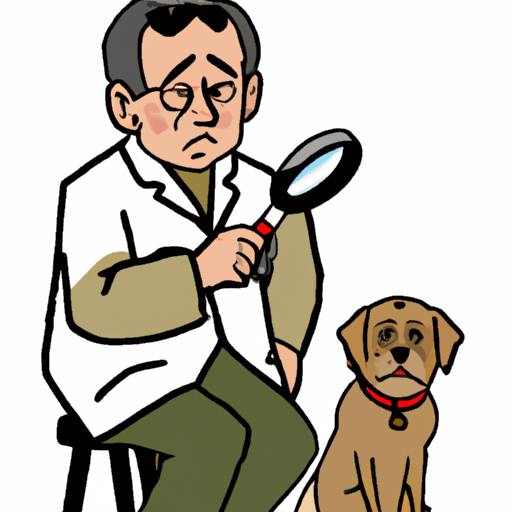As your canine companion ages, you may notice certain changes in their physical appearance and behavior. Among the most common and concerning changes are the appearance of lumps or bumps under their skin. It’s natural to feel worried when you spot these abnormalities, but before panic sets in, it’s important to understand why old dogs get lumps, and what you can do to help your furry friend.
Table of Contents
- Common Reasons for Lumps in Old Dogs
- Types of Lumps
- How to Recognize and Inspect Lumps
- When to Consult a Vet
- FAQs
Key takeaways:
- Old dogs often develop lumps due to age-related changes in their skin and tissues.
- Not all lumps are harmful; many are benign growths like lipomas.
- Regularly inspecting your dog for lumps and consulting with a vet can help ensure early detection and treatment.
Common Reasons for Lumps in Old Dogs
One of the most common reasons why older dogs develop lumps is due to the natural aging process. As dogs age, changes occur in their skin and subcutaneous tissue, which can lead to the formation of lumps.
In many cases, these lumps are benign growths known as lipomas. Lipomas are fatty tumors that are common in older dogs, particularly overweight ones. They are usually soft and moveable, and typically do not cause any discomfort or health issues to the dog.
Another common type of lump found in old dogs is a sebaceous cyst, which is a blocked oil gland in the skin. These cysts can rupture and may need to be cleaned and managed by a veterinarian to prevent infection.
However, not all lumps are harmless. Some may be malignant tumors, indicating a form of cancer. For this reason, any new lump on an older dog should be checked out by a vet.
One Top Dog provides some useful insights on recognizing and dealing with lumps and bumps in dogs.
Types of Lumps
There are several types of lumps that can appear on your dog’s body. Here’s a brief overview:
- Lipomas: These are benign fatty tumors, which are usually soft and moveable. You can learn more about Lipomas here.
- Sebaceous cysts: These are blocked oil glands in the skin which can sometimes rupture.
- Mast cell tumors: These are a type of cancer that can vary in appearance. They can be small, soft, and appear suddenly, or they can be larger and harder, and grow over time.
- Histiocytomas: These are benign skin tumors that often appear on younger dogs, but can also occur in older dogs.
How to Recognize and Inspect Lumps
Regularly checking your dog for lumps can help in early detection and treatment. Here’s how to do it:
- Visually inspect your dog: Look for any noticeable changes in their skin or fur. Raised areas, unusual colorations, or areas where your dog seems to be excessively licking or scratching could indicate a lump.
- Physically examine your dog: Gently run your hands over your dog’s body, feeling for any raised areas or unusual bumps. Pay special attention to areas like the belly, armpits, and neck, where lumps can often form.
- Monitor changes: If you find a lump, monitor it for changes. If it grows rapidly, changes shape or color, or seems to be causing your dog discomfort, it’s time to consult a vet.
Here’s an easy-to-follow guide for identifying and monitoring lumps in your dog.
When to Consult a Vet
While many lumps are benign, it’s always a good idea to have any new lump checked by a vet. This is especially true if the lump grows rapidly, changes in shape or color, or if your dog appears to be in discomfort.
If the lump is determined to be a malignant tumor, early detection and treatment can significantly improve your dog’s prognosis. You can find more about the importance of early detection and treatment here.
FAQs
Q: Why do old dogs get lumps?
A: Old dogs often develop lumps due to age-related changes in their skin and tissues. Many of these lumps are benign growths like lipomas, but some can be malignant tumors.
Q: Are all lumps in old dogs harmful?
A: No, many lumps in old dogs are benign and do not cause any health issues. However, some lumps can be malignant tumors, which is why it’s important to have any new lump checked by a vet.
Q: How can I check my dog for lumps?
A: You can check your dog for lumps by visually inspecting them and physically feeling their body for any raised areas or unusual bumps.
Q: When should I take my dog to the vet?
A: You should take your dog to the vet if you notice a new lump, or if an existing lump grows rapidly, changes in shape or color, or if your dog seems to be in discomfort.
Caring for an aging dog can be challenging, but with knowledge and vigilance, you can ensure that your furry friend remains comfortable and healthy into their golden years.



